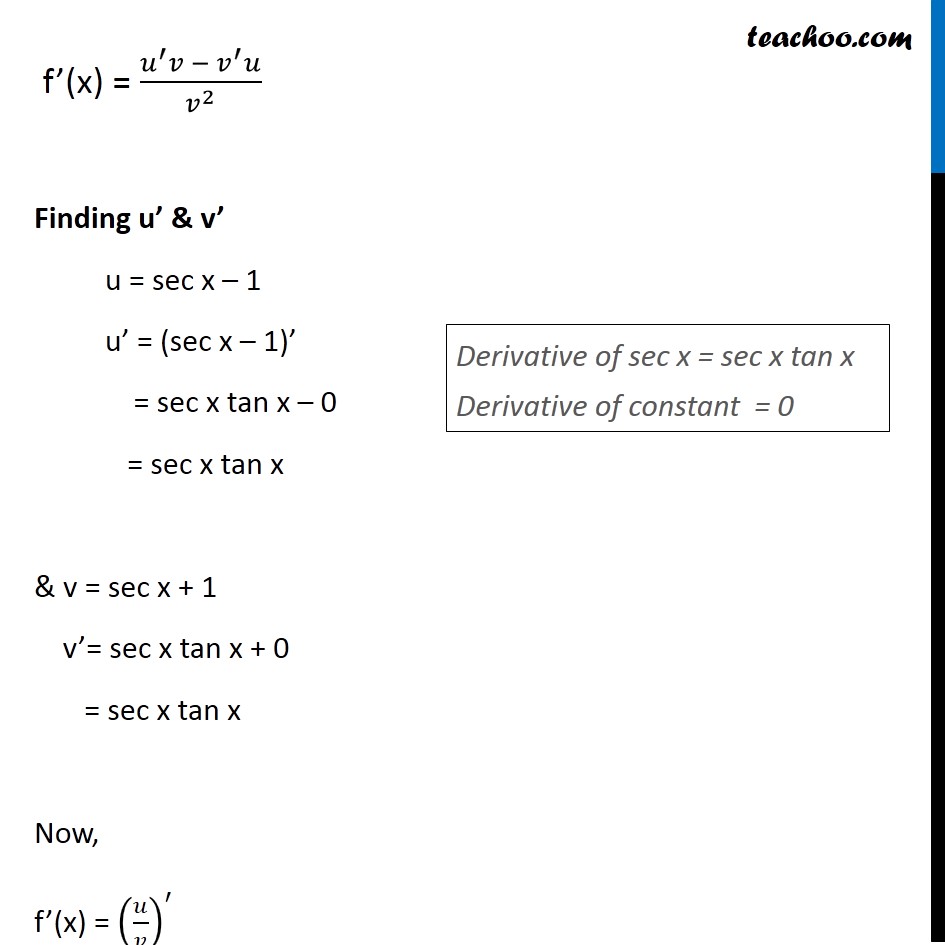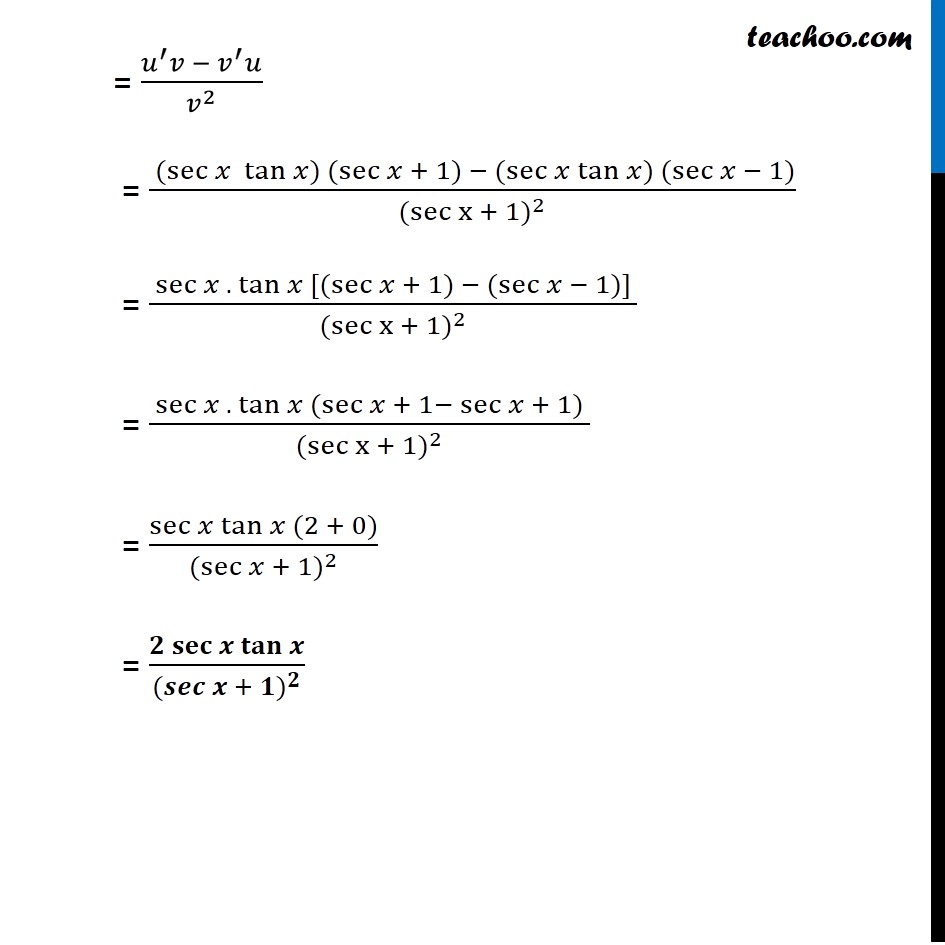


Derivatives by formula - sin & cos
Last updated at Dec. 16, 2024 by Teachoo



Transcript
Misc 18 Find the derivative of the following functions (it is to be understood that a, b, c, d, p, q, r and s are fixed non-zero constants and m and n are integers): sec〖x − 1〗/sec〖x + 1〗 Let f (x) = sec〖x − 1〗/sec〖x + 1〗 Let u = sec x – 1 & v = sec x + 1 ∴ f(x) = 𝑢/𝑣 So, f’(x) = (𝑢/𝑣)^′ Using quotient rule f’(x) = (𝑢^′ 𝑣 −〖 𝑣〗^′ 𝑢)/𝑣^2 Finding u’ & v’ u = sec x – 1 u’ = (sec x – 1)’ = sec x tan x – 0 = sec x tan x & v = sec x + 1 v’= sec x tan x + 0 = sec x tan x Now, f’(x) = (𝑢/𝑣)^′ Derivative of sec x = sec x tan x Derivative of constant = 0 = (𝑢^′ 𝑣 −〖 𝑣〗^′ 𝑢)/𝑣^2 = ( (sec〖𝑥 tan〖𝑥)〗 (sec〖𝑥 + 1) − (sec〖𝑥 tan〖𝑥)〗 (sec〖𝑥 − 1)〗 〗 〗 〗)/〖(sec〖x + 1〗)〗^2 = ( sec〖𝑥 . tan𝑥 [(sec〖𝑥 + 1) − (sec〖𝑥 − 1)] 〗 〗 〗)/〖(sec〖x + 1〗)〗^2 = ( sec〖𝑥 . tan𝑥 (sec〖𝑥 + 1−〖 sec〗〖𝑥 + 1〗) 〗 〗)/〖(sec〖x + 1〗)〗^2 = sec〖𝑥 tan〖𝑥 (2 + 0)〗 〗/〖(sec〖𝑥 + 1〗)〗^2 = (𝟐 𝐬𝐞𝐜〖𝒙 𝐭𝐚𝐧𝒙 〗)/〖(𝒔𝒆𝒄〖𝒙 + 𝟏〗)〗^𝟐